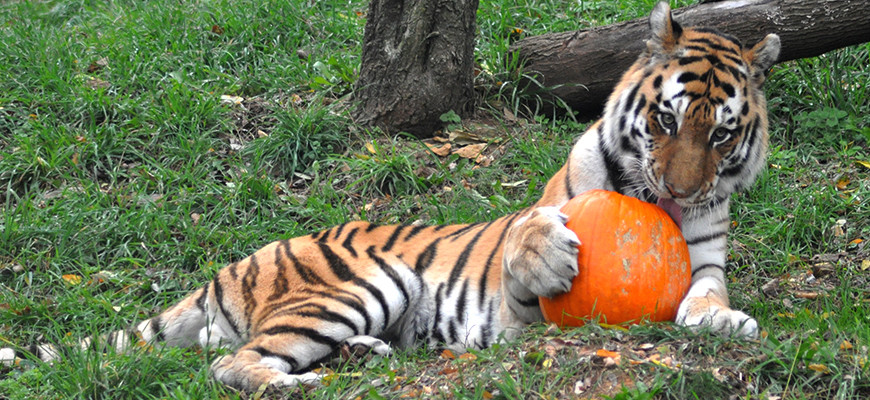 At zoos accredited by the AZA, animal enrichment is an important tool used to support an animal’s physical and psychological needs. Enrichment is as critical to an animal’s well-being as is the right diet and proper medical care. The Louisville Zoo has some of the best enrichment experts and programs in the Zoo world and has received multiple awards for Top Honors in new Zoo exhibit design in North America. Glacier Run, Gorilla Forest and the Islands were all groundbreaking efforts that focused on the creation of more enriching environments and programs for the animals as well as exciting experiences for visitors.
At zoos accredited by the AZA, animal enrichment is an important tool used to support an animal’s physical and psychological needs. Enrichment is as critical to an animal’s well-being as is the right diet and proper medical care. The Louisville Zoo has some of the best enrichment experts and programs in the Zoo world and has received multiple awards for Top Honors in new Zoo exhibit design in North America. Glacier Run, Gorilla Forest and the Islands were all groundbreaking efforts that focused on the creation of more enriching environments and programs for the animals as well as exciting experiences for visitors.
So what exactly is enrichment?
According to the Association of Zoos and Aquariums, enrichment is defined as “a process for improving or enhancing animal environments and care within the context of their inhabitants’ behavioral biology and natural history.”
Basically, enrichment activities increase behavioral choices, provide engagement and stimulation and draw out their species-appropriate behaviors and abilities, thus enhancing animal welfare.
So what does enrichment look like? 
Enrichment comes in all shapes and sizes and is not always readily recognized. Our zookeepers and staff have to get very creative to keep so many animals engaged in species-appropriate behaviors.
Sand, mud, logs and leaves may not seem very exciting to you or me, but for many of our Zoo animals, these items make perfect playgrounds and help create more enriching and stimulating living environments.
Some of the most effective enrichment techniques involve encouraging a behavior that would normally occur in an animal’s natural habitat. An animal’s survival in the wild is dependent on its ability to find food. Something as simple as smearing peanut butter in a cardboard box or hiding food in a toy presents the animal with a challenge to seek and find its reward. Amber the orangutan loves to put cloth over her head. For Zoo guests, this might seem an unnatural behavior but in reality, it mimics a behavior displayed in the wild. Orangutans are native to rain forests, and often use large leaves to provide cover and protection from the rain.
Enrichment through Exhibitry
Exhibits at our Zoos are created with enrichment in mind — from the addition of stairs and water elements to the location and texture of various paths to the selection and location of trees and plantings. For example, Glacier Run offers a variety of options for the bears to choose from including steps to climb to the overhead bridge leading to the outdoor pool and dig pits, indoor pools for swimming, ice buckets for play and cooling off, and bedrooms for resting where they can also watch their zookeepers prepare meals.
One of the most innovative enrichment tools is animal rotation, a signature strategy used by our Zoo. The Islands, Gorilla Forest and Glacier Run exhibits were designed to allow for animals to be easily moved from area to area providing a change in their environment and routine on an irregular basis.
Some predator animals like Sumatran tigers may be placed in an area inhabited earlier in the day by a prey species like the Babirusa pig. You can just imagine how a tiger might find the smells of prey intensely engaging. This exhibit design model was developed by Zoo staff making the Islands the first multi-species rotational exhibit in the world.
You can observe these enrichment activities every day at the Zoo. Visit and experience the amazing exhibits and observe fun animal presentations throughout the day. There’s lots to do at the Louisville Zoo!

